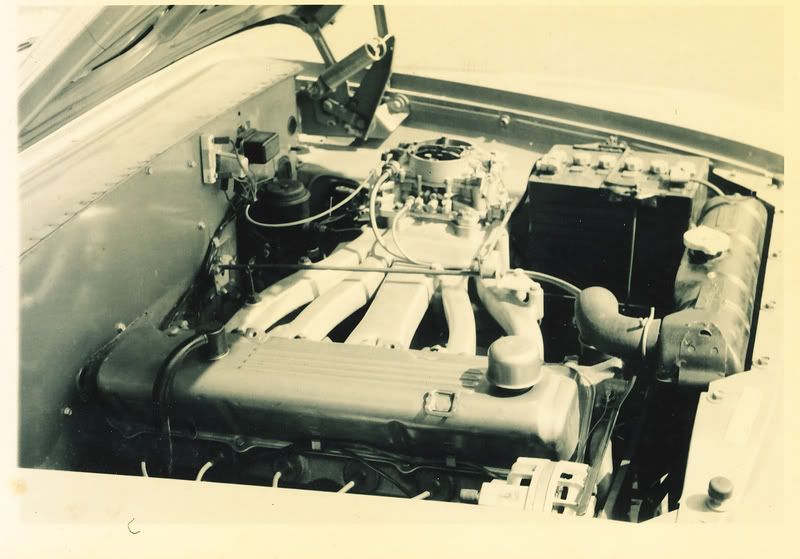When I said "weak-kneed" I was referring to the marketing of that 225 Hyper Pack. I never saw one "in real life" did you?
Well, remember it wasn't a factory option…it was a parts package sold over the parts counter. And the only reason they sold it there was to be able to call it "stock equipment" as defined by the NASCAR rules so they could run Hyper Pak-equipped Valiants in the compact races. They didn't have to sell a lot of them to comply with the rules, so they didn't put much effort into it. Probably wouldn't have been much return on the investment; in the early '60s gas was 20¢ a gallon and V8s (and the cars they were going in) were getting bigger and bigger.
They ran okay,but couldn't turn the rpm's that a 170 would, so that substandard head (for the displacement) kept them from being a stellar performer in class racing.
Was it the head, d'you figure? I'm thinking it was probably more down to the super-long stroke.
I believe also, that the NASCAR Conpact race-prepared Valiant were 170... not 225s, because there WERE no 225=powered Valiants yet
Yup, all 170s. And as StrokerScamp notes, the Valiants so thoroughly trounced all other "competitors" that NASCAR held the series only 2 years, '60 and '61.
All I ever knew about was a carb/intake manifold, headers, 10.5:1 pistons and a cam and kit. Was there more?
They seem to have played fast and loose with the scope of the kit. Here's the BOM from the '61 Lancer Hyper Pak kit:
Hyper Pack Field Installation Instructions 2205 573 (1ea)
Camshaft 2205 620 (1ea)
Assy. - Valve spring. & Damper 1944 554 (12ea)
Pushrod 2129 619 (12ea)
Manifold, intake 2129 898 (1ea)
Support - Intake & Exh. Manifold - Front 2205 833 (1ea)
Support - Intake & Exh. Manifold - Rear 2205 834 (1ea)
Spacer - Intake to exhaust manifold 2202 567 (1ea)
Manifold, exhaust - Front 2129 899 (1ea)
Manifold, exhaust - Rear 2129 900 (1ea)
Carburetor 2129 881 (1ea)
Assy. - Air Cleaner 2129 992 (1ea)
Assy. - clutch cover & pressure plate 2201 223 (1ea)
Assy. - clutch drive disc 2201 219 (1ea)
The air cleaner, despite being a low-profile pancake design borrowed from the long-crossram V8 setup, would not fit under the hood of a '60-'62 A-body w/225 engine. It was either live without an air cleaner (engine doesn't live long) or cut a hole in the hood as shown
here.
So what else? Well, there was the big-diameter Y-pipe connecting to the two header outlets and leading into the big muffler (latter borrowed from big V8 Mopars...take a look also at the P/Ns of the double-coil valve springs and you'll see they came into existence long before the first slant-6 engine in the world started and ran). Then there was the choke pull and plate assembly, made in at least two versions ('60 Valiant, '61 Lancer), replacing the plain blockoff plate on the left side of the instrument cluster of these cars where the pushbuttons would be on an automatic car. Choke knob with "C" moulded into it, in same style as headlight and wiper knobs, different on '60 Valiant, '61 Valiant, and '61 Lancer. Brakes, too; those NASCAR Valiants had decidedly nonstandard brakes. How much of that equipment could be had over the dealer parts counter? Good question, I wasn't there. Presumably all of it had to be at least offered, because of the "stock equipment" requirement. Photos in road tests of the day do show the Y-and-headpipe and other equipment beyond that listed above. (
UPDATE Thanks, JR, that's one of the photos I had in mind)
We need a canted-valve,big port, ALUMINUM head for these engines.
Doug???
With Doug all things are possible!





















